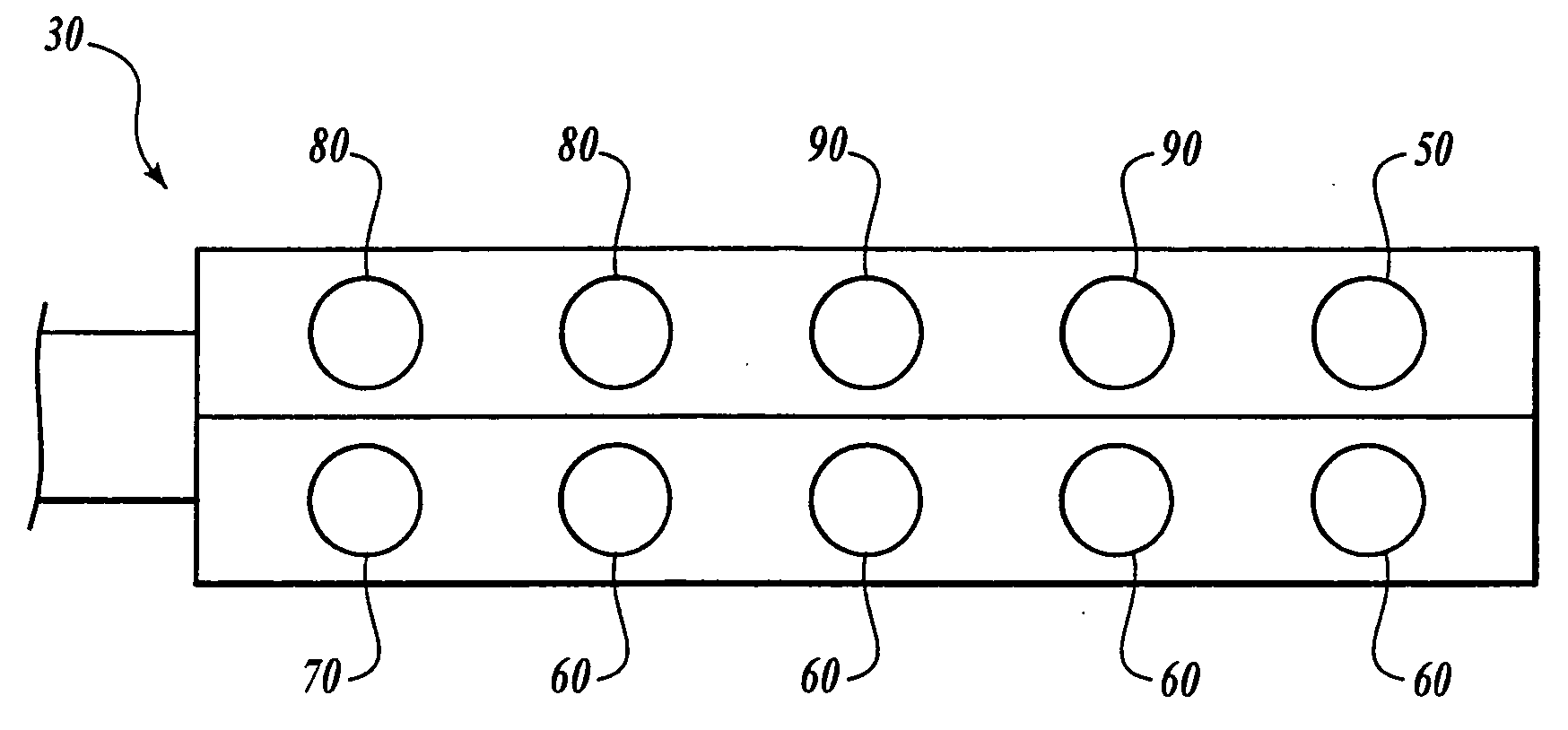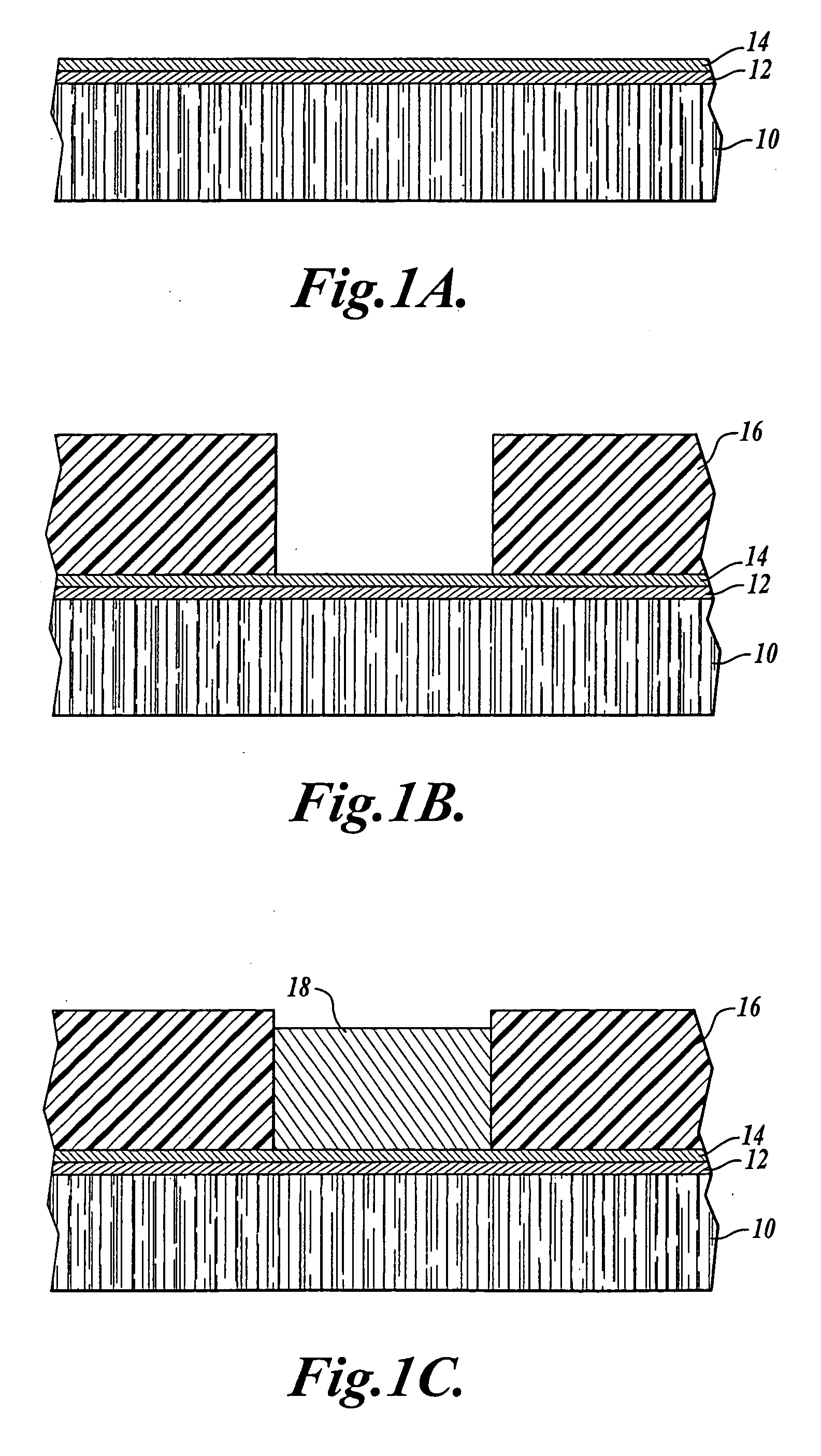Thiourea-and cyanide-free bath and process for electrolytic etching of gold
- Summary
- Abstract
- Description
- Claims
- Application Information
AI Technical Summary
Benefits of technology
Problems solved by technology
Method used
Image
Examples
Embodiment Construction
[0014] As used throughout the specification, the following abbreviations and symbols have the following meanings, unless the context clearly indicates otherwise: GaAs=gallium arsenide; Å=angstrom; Å / min=angstroms per minute; μm=micrometer; M=molarity; g / L=grams per liter; and ml / L=milliliters per liter.
[0015] The term “etching” refers to the electrolytic removal of gold, unless the context clearly indicates otherwise. Electrochemical deposition refers to both electrolytic deposition and electroless deposition. “Anode” refers to the electrode at which electrolytic oxidation occurs. “Cathode” refers to the electrode at which electrolytic reduction occurs. The term “undercutting” refers to the undesirable result where gold is etched away along the base of a feature, thereby creating a notch or undercut along the base of the feature. The term “wetting agent” refers to an organic compound that reduces the surface tension of the bath and that serves as a wetting agent. The term “PEG” ref...
PUM
| Property | Measurement | Unit |
|---|---|---|
| Temperature | aaaaa | aaaaa |
| Concentration | aaaaa | aaaaa |
| Concentration | aaaaa | aaaaa |
Abstract
Description
Claims
Application Information
 Login to View More
Login to View More - R&D
- Intellectual Property
- Life Sciences
- Materials
- Tech Scout
- Unparalleled Data Quality
- Higher Quality Content
- 60% Fewer Hallucinations
Browse by: Latest US Patents, China's latest patents, Technical Efficacy Thesaurus, Application Domain, Technology Topic, Popular Technical Reports.
© 2025 PatSnap. All rights reserved.Legal|Privacy policy|Modern Slavery Act Transparency Statement|Sitemap|About US| Contact US: help@patsnap.com



